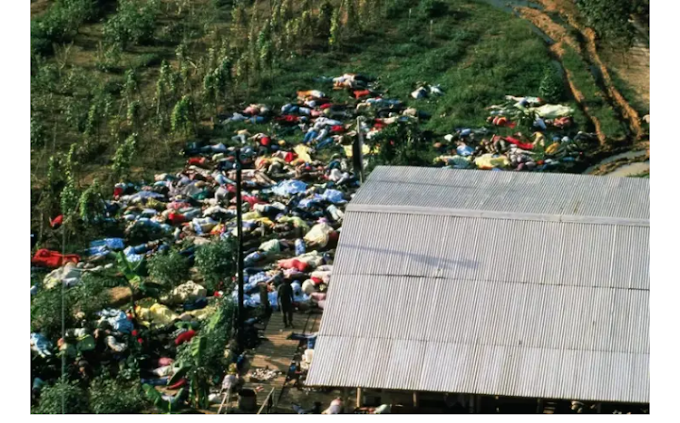Climatic CONTROLS AND factors
Introduction
In this lesson, controls or factors that determine climatic conditions globally and regionally and/or locally are discussed. They include energy and moisture fluxes (controls) and latitude, altitude, land and sea and relief features (factors). The characteristics of air masses and how they control climate, the convergence of air masses and fronts, frontal systems are described.
Air Masses
An air mass is a large body of air of considerable depth that is relatively homogenous in terms of temperature and moisture. The general circulation of the atmosphere produces in certain places large masses of air with characteristic and well-defined physical conditions, especially of temperature and humidity. The sources of air masses are the great permanent or semi-permanent high-pressure zones of the earth’s circulation. Conversely, areas of low pressure are regions of convergent air masses. Therefore the chief seats of major high-pressure cells and therefore the main sources of uniform air masses are:
The Polar Region
(b) The cold continental masses of Eurasia and N. America in winter.
(c) The ‘Horse’ latitude high-pressure cells especially over the oceans in summer, but to a less extent over such large land masses as N. Africa and Australia in winter.
Air masses may therefore be described as:
‘Polar’ or ‘Tropical’ which in general determines their temperature conditions and through temperature, their capacity for moisture holding.
‘Continental’ or ‘Maritime’, which in general determines the extent to which their moisture capacity is realised, i.e. their relative humidity.
The above categorisation identifies four individual kinds of air masses:
Tropical Maritime (Tm)
Polar Maritime (Pm)
Tropical Continental (Tc)
Polar continental (Pc)
Two additional categories are sometimes used in reference to the extremes of the continental polar air masses and the maritime tropical air masses. Continental arctic (CA) indicates exceptionally cold dry, air; equatorial (E) indicates very warm, moisture air.
Cold air masses
These air masses have their main sources in polar or arctic regions but owing to the extension of the continental anticyclones (high-pressure cells) in winter they may spread far down the interior plains of the U.S.A and as far south as the Himalayan mountain barrier in Asia. In their place of origin they are characterised by:
Low temperature due to loss of heat by radiation.
Low specific humidity due to the low moisture capacity of air at low temperature.
Stable stratification due to intense cooling of lower layers and a consequent small lapse rate.
On leaving its place of origin, a cold air mass begins to be warmed in its lower layers by the warmer sea or land; the results are:
The lapse rate is steepened, sometimes to such an extent that instability results and strong ascending current rise.
The humidity increases especially over a warm ocean.
The combination of the above two factors produces cumulo-nimbus clouds and precipitation in the form of short, sharp showers with turbulence, gusts and squalls. Bright intervals occur between showers.
Visibility is good between showers because of the initial purity of the air and the dilution of impurities by the strong turbulence
Tropical Maritime
The sources of this air mass are the sub-tropical anticyclones (high pressure cells), which persist throughout the year over the oceans at about latitude 30°N and S. In its place of origin the tropical maritime is characterised by:
(a) High temperatures derived from the warm sea over which they lie.
High humidity in the lower layers since abundant moisture is available and the capacity of the air for moisture is high at high temperatures.
A fairly stable stratification.
On leaving its place of origin such tropical maritime air as it moves to higher latitudes usually becomes cooled in its lower layers by contact with the relatively colder sea or land over which it passes; the results are:
The lapse rate is diminished and even inverted. Stability is thus greatly increased convection is made impossible and turbulence is greatly reduced.
The cooling of the lower layers with their high specific humidity results in a great increase in relative humidity and dew point is soon reached.
The combination of these two factors produces fog, or if turbulence is strong enough, stratus clouds. Cloud cover is continuous and drizzle or steady rain is produced especially if the air is lifted for example orographically.
Visibility is low because of the high moisture content and because impurities are retained in the lower layer due to the absence of convection.
If tropical maritime air invades a hot continent in summer, or moves towards yet warmer seas, it becomes in effect, a cold air mass since it is travelling into regions hotter than its source. It therefore shows in a marked degree, the instability characteristic of cold air masses and since the moisture charge is high, the instability rain so produced is heavy. Most east coasts in mid-latitudes derive summer maximum of rain from these sources.
Tropical continental
North Africa alone in the Northern Hemisphere produces a tropical continental air mass in winter (the Harmattan), but in summer the arid western regions of the U.S.A also become a source of tropical air. In the Southern Hemisphere Australia and, to a less extend South Africa contribute air of this type. In the source region tropical continental air is dry and in the summer very hot and unstable. The low humidity results in a high condensation level and no precipitation, despite instability. In winter it is dry and warm, but stably stratified since it occurs in anticyclonic regions of descending air. When it travels to cooler regions, it increases its stability, but its temperature provides energy where it meets cold air masses as for example, along the Mediterranean front.
Convergence of air masses and fronts
The migration of air masses from their source must result eventually in their meeting and interference and this will occur in regions of low pressure, which by their very nature must be regions of convergence. Experience shows that although there is inevitably some marginal mixing and incorporation, the air masses tend to retain their individual characteristics fairly clearly defined, especially in the upper air, which is less disturbed by the turbulence that affects the lower strata in contact with the earth’s surface. The convergence results in the displacement from the surface of the lighter and warmer air, by the denser and colder air and this ascent produce condensation and precipitation. The severity of the disturbance that accompanies this convergence is proportional to the contrast of temperature and humidity of the air masses involved, for the temperature contrasts provide the main source of energy for the generation of storms. Storminess is greatest where polar air meets tropical, as it does along the polar fronts and much less where tropical meets tropical along the equatorial front.
Frontal systems
Definitions
Frontal systems occur all over the world and in all seasons. They are the chief cause of rapid large-scale changes in weather conditions. When differing air masses meet a boundary line or front forms, the process is known as frontogenesis. When the front breaks down, the air mixes and the front disappear, the process is known as frontolysis
Types of fronts
(a) Warm Fronts
When a mass of warm (usually moist) air encounters a mass of cold air, we have a warm front. The warm air, which is lighter and less dense, pushes up in a wedge like formation a top the mass of cold air (figure 2). However the slope formed by the upward-moving mass of warm air with the horizontal surface is on the order of about 1 to 300, i.e. the upward rise would be about 1 km for every 300 km of horizontal surface.
Figure 2. A warm front system
A warm front creates a wide band of weather because of the lifting of the warm air. There is often considerable cloud cover and precipitation along the frontal surface. The air mass is usually unstable and convection produces rapid uplift followed by precipitation.
(a) Cold Fronts
When winds from the north bring cold air toward a band of warm air, a cold front results. The heavier, denser cold air pushes in under the warm air and rapidly forces it upward at a sharp angle (figure 3). That is why a cold front forms a much steeper wedge than a warm front. In cold fronts, the ratio between the ascent of air and the horizontal surface is on the order of about 1 to 50 (i.e. 1 km vertical rise for every 50 km of horizontal surface).
Figure 3. A cold front system
Cold fronts generally produce much narrower bands of weather than warm fronts, and exhibit the results of convection processes more markedly. The frontal line of a cold front slopes sharply backward, rather than in the same direction the front is moving. The warm air, initially at the surface of the Earth is replaced by the oncoming cold air mass. In winter, cold fronts generally approach more rapidly than they do in summer. The winds are stronger.
In a cold front system, the predominant type of cloud is the cumulus, and frequent thunderstorms occur (which is not a typical occurrence in warm fronts). The weather patterns occur in narrow bands. The degree of activity depends on whether the warm air is being pushed up from the surface quickly or slowly. If the warm air rises slowly, the rate of cooling is of course slower and the disturbance of the cold front is less violent.
(c) Stationary Fronts
When a frontal system stops moving forward, a stationary front occurs. Stationary fronts may result from the stalling of either a cold or warm front, and may remain stationary for several days. When a stationary front starts to move again, it may be either a warm front or a cold one. The discontinuity of temperatures often weakens and the front simply dissipates. In a stationary front the weather conditions are fair and stable.
(d) Occluded Fronts
When a cold frontal system overtakes a warm frontal system, the two fronts trap air between them that is much warmer than the surrounding masses of air. Occluded fronts result.
Figure 4: Cold Front Type of Occlusion
Occlusion takes place when a mass of warm air is pushed upward and removed from the ground by two dense masses of cold air. These air masses meet and push the warmer mass of air off the ground surface between them. In a cold-front occlusion (figure 4) a warm front is pushed off the ground by the advancing cold heavy air.
In a warm front occlusion (figure 5), a cold front is pushed off the ground because the air in the dancing warm front is colder at the leading edge than the air in the cold front with which it is colluding.
Latitude
Latitude influences the global radiation receipts on the earth surface. This affects the earth’s temperature distribution. Latitude also influences the pressure pattern, which in turn determines wind flow and precipitation distribution.
Within the equatorial zone i.e. 10o N and S latitude, the sun throughout the year provides intense insolation, while day and night are of roughly equal duration. Astride the tropics of Cancer and Capricorn are the north tropical zone and south tropical zone respectively; spanning the latitude belts 10° to 25° N and S. In this zone the sun is overhead at one solstice, thus a marked seasonal cycle exists, but is combined with a potentially large annual insolation.
Immediately pole ward of the tropical zones are transitional regions, which have become known widely among geographers as the sub-tropical zones. For convenience, these zones are here assigned the latitude belts 250 to 300 north and south, but it is understood that the adjective “sub-tropical” as applied to environmental regions may extend a few degrees further pole ward or equator ward of these parallels.
The middle latitude zones lying between 350 and 550 north and south latitude represent regions in which the sun’s path shifts through a relatively large range of noon altitudes, so that seasonal contrasts in incoming solar energy are strong. Seasonal differences in lengths of day and night exist as compared with the tropical zones.
Bordering the middle latitude zones on the pole ward side are the sub arctic zones, 550 to 600 north and south latitudes, transitional between middle latitude and arctic zones.
Astride the Arctic and Antarctic circles, 66.5° north and south latitudes lie the arctic zones, which may be further differentiated, if desired, into an arctic zone and an Antarctic zone. The latitudinal extent of the arctic zones is here specified as 60° to 75° north and south but these limits should be imposed severely. The arctic zones have an extremely large yearly variation in lengths of day and night, yielding enormous contrasts in incoming solar energy from solstice to solstice.
The polar zones, north and south are circular areas between 75° latitude and the poles. Here the polar regime of six months day and six months might yields the ultimate in seasonal range of incoming solar radiation.
Altitude
Apart from its effects on temperature i.e. decrease of temperature with altitude at an average rate of 6.5°C/km, altitude also cause changes in pressure and rainfall. Pressure decreases with altitude at the rate of 1mb/10m. This is up to a bout 1500 m above sea level, after which the rate is reduced until at 4500 m above sea level, when the rate of decrease is only 1mb/20m. Orographic rainfall is brought about as a result of rise of moist laden winds over a mountain barrier.
Land and water masses
As stated earlier land surfaces are rapidly and intensely heated under the sun’s rays, whereas water surfaces are only slowly and moderately heated. On the other hand, land surfaces cool off more rapidly and reach much lower temperatures than water surfaces when solar radiation is cut off. Temperature contrasts are therefore great over land areas, but only moderate over water areas.
Distance from the coast or water mass can have a marked effect on temperatures and also on rainfall. Where prevailing winds blow from a warm sea on to the land they will deposit precipitation. The amount will steadily decrease moving inland. If there is a cold ocean current offshore, it is possible that the reverse will occur. The cold current lowers the temperature of onshore winds so that when they reach the coast they become colder and therefore relative humidity falls and there is no precipitation. This is what occurs along the coast of Namibia, creating the Namib Desert.
Relief features
In addition to the effects that mountains have their own climates, they also affect large areas on the leeward side. The ocean basins have a lot of climatic influence on their coastal strips than further inland. Not only is the rainfall reduced in the rain shadow areas inland, but also temperatures are more extreme .Read more on this link
Summary
In this lesson, climatic controls and factors were defined as aspects of the global environment that determine global or local climatic conditions. Detail discussion of air masses, which control the global energy and moisture fluxes and therefore the global climate, was done. The types, characteristics and weather systems associated with convergence zones and fronts were highlighted. The influence of regional and local climatic control factors such as latitude, altitude, land and water masses and relief features was discussed using specific examples.
Definition of Key Words
Air mass is a large body of air of considerable depth that is relatively homogenous in terms of temperature and moisture
Atmospheric Stability is the atmosphere is considered stable or unstable depending on what happens to a parcel of air in that atmosphere when it is given an initial “push” vertically upwards or downwards. If the parcel of air continues to rise or fall then the atmosphere is unstable. If it resists movement and returns to its original position then the atmosphere is considered to be stable. The heating or cooling of the air parcel normally causes the initial push
Front is a meeting line or boundary between two air masses of different temperature and moisture characteristics
Lapse Rate is a change of temperature with either increase or decrease in altitude. There are basically two types of lapse rates; Environmental Lapse Rate (ELR) and Adiabatic Lapse Rate (ALR).
Revision Questions
Explain the importance of air masses as the major controls of global climates
Examine the differences in the weather patterns formed between a cold and warm front
Using explain how latitude, altitude, relief features and water masses affect the climate of East Africa.
Further Reading
Barry, R.G. and Chorley, R. J. 1976. Atmosphere Weather and Climate. Methuen and Co. Ltd.
Chritchfield, H.J. 1966. General Climatology Prentice hall Inc.
Dann, W.L. 1975. Meteorology, McGraw-Hill Co. New Jersey.
Lake, P. 1961. Physical Geography, Cambridge University Press
Mather, J.R. 1974. Climatology, Fundamentals and Applications McGraw-Hill Co.
Neiwolt, S. 1977). Tropical Climatology, An Introduction to the climates of the Low Latitudes, John Wiley and Sons Chichester
Oliver, J.E. and Hidore, J.J. 1984. Climatology: An Introduction. Bell and Howell Co. Toronto
Strahler, A.N. 1975. Physical Geography John Wiley and Sons Inc.















.jpg)















.jpg)



